13 Effective Sprint Retrospective Techniques and Tips

Teams run retrospective meetings after every Sprint or project, so you’ve likely tried many things to keep your retros fresh and productive. And yet, you aren’t getting what you were hoping for from these events.
Retrospectives take careful planning and execution to yield results. Even with the best preparation, getting teams talking openly about how to improve can easily become a soul-sucking ritual the entire team feels is a waste of time. But it doesn’t have to be!
Fortunately, there are many retrospective techniques, tips, and tools that can take your retros to the next level.
The impact of new retrospective techniques
Retrospectives or lessons learned meetings are a Scrum staple, and many other agile teams or project managers also incorporate them into their practices. The goal of a retrospective is straightforward: make time regularly to reflect as a team on how you can improve your work.
Too often, retrospective meetings are loosely led and devolve into arguments or complaint forums for the team. Sometimes a culture of skipping retros can even emerge.
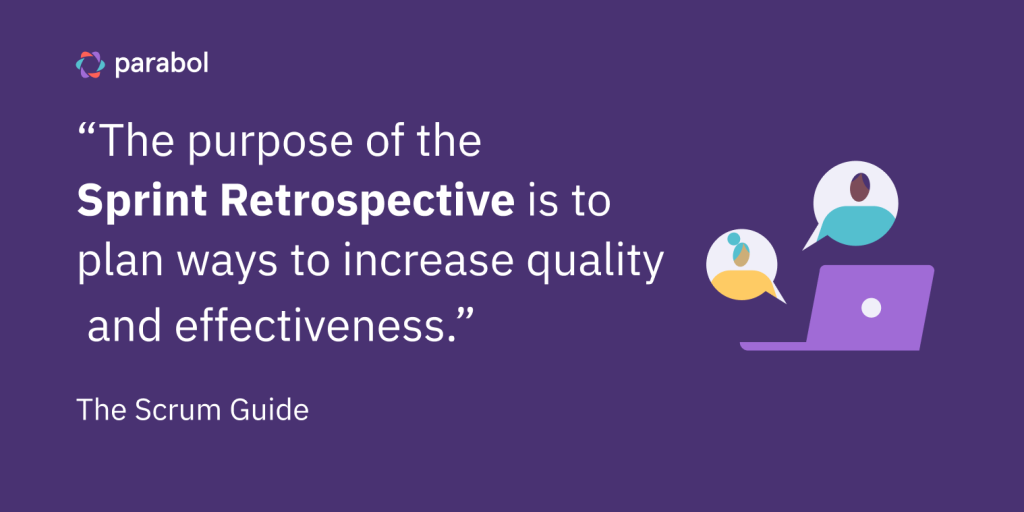
By adding new retrospective techniques and formats to your toolkit, you can:
- Get better, more actionable feedback from your team more often.
- Gain a deeper understanding of how your team feels about their work and design solutions that answer their biggest concerns, resulting in smoother collaboration in the future.
- Achieve concrete goals and get to the root cause of problems your team faces.
- Define a structure that keeps your next agile retrospective on track and effective.
- Motivate team members to attend the event instead of having to coerce them into joining.
1. Try new retrospective formats first
Agile retrospectives should be a somewhat freeform, team-driven exercise. But defining a meeting format doesn’t prevent you from taking roads less traveled. Nor does it damage your ability to have a freeform discussion when appropriate.
A new structure is the easiest way to refresh your retrospectives. So consider these ideas before exploring other changes and practices.
Here are some ideas to move you away from the default “What went well,” “What didn’t go well,” “What can we improve.”
You can match these popular sprint retrospective formats with the meeting outcome you’re looking for.
Retrospective ideas to try with your team
Here are some of our favorite retrospective ideas for new or experienced teams. If you need to give your retrospectives a reset, look no further for inspiration.
Strengths-based retros build on success
A strengths-based format identifies the strong points of your team. You can then build on those strengths to drive change and improvement during the next Sprint.
You take problems from the previous Sprint and connect them to team strengths. That way, you know how to solve such issues in the future.
“Energy Levels” retros uncover what’s energizing the team
The energy levels retrospective asks team members to reflect on their work by considering which parts are exciting (high energy), good (medium energy), and tedious (low energy).

This agile retrospective aims to identify how to improve the quality of work for each staff member and how the team works together. You might, for example, discover that a task you consider dull is exciting for a teammate who can’t wait to take it off your hands.
But if your team members are feeling uninspired during retrospectives, you can use it to diagnose why. What could make them more energizing? What makes them un-energizing?
“Energy Levels” is just one type of retro that focuses on feelings. Here are some others to try with your team.
Mountain Climber retrospectives give the team a metaphor to work with
The Mountain Climber retrospective portrays your Sprint or project as a mountain hike. What were the hurdles, risks, and aids you encountered on your ascent? How did you overcome them?

Ask the team to brainstorm around four categories (blockers, risks, enablers, and help), then connect their ideas to data points from the Sprint. With those laid out, generate actions and goals that’ll help ease and improve future climbs.
Metaphors like mountain climbing offer a way for teams to visualize their work and think more creatively. Don’t like mountaineering? There are many other metaphor-based retrospectives you can try.
“Each One Meets All” retrospectives help teammates build relationships
This format fits new teams who don’t know each other well or long projects that have experienced significant turnover.
The Each One Meets All format creates a fun retrospective for everyone on the team to get to know each other. You give 1:1 feedback based on the last sprint or project in quick sessions that resemble speed dating.
Zoom’s breakout rooms provide a handy way to do this retrospective idea remotely. Alternatively, create 1:1 calls in Slack or Microsoft Teams.
Basketball retrospectives help identify roles on the team
Because agile teams should be self-sufficient, each team member must play different roles, like developer, designer, or tester. It’s a bit like being on a basketball team, where players need to learn what to expect of each other to achieve success.
In a basketball retrospective, encourage your team to move beyond titles like “developer” or “designer” to more accurate and original ones such as “new technology evaluator” or “rapid prototype.”
It’s even ok – and not uncommon – if team members discover they’re playing more than one position.
The insights from the brainstorming can help team members redefine their roles and improve how they’ll collaborate and view each other in the future. Not a basketball fan? Try these other activities to help your team discover and evaluate their roles.
“Three Little Pigs” retrospectives identify weaknesses and strengths
“The first little pig… built his house out of straw. The second little pig… out of sticks… The third little pig worked hard all day and built his house with bricks.”
The story of the three little pigs is an excellent and playful analogy to analyze the build state of your product or the progress of your work. Ask your team to reflect on:
- What is at risk of breaking? 🌾
- What needs more work? 🥢
- What is rock solid? 🧱

As a facilitator, you can encourage your team to focus beyond the current sprint. Try using these prompts to discuss the product or, more broadly, team relations.
Maybe internal communication needs more attention or guidelines, for example. You can choose to direct this retrospective in whichever way you want.
👩🏾🎓 Check out our exhaustive collection of retrospective templates and ideas if you’re looking for more inspiration. Try out all the classic retro formats like the Starfish, Start, Stop, Continue, or Sailboat retrospective, and more.
2. Start with an icebreaker question or game
Teams only have effective retrospectives when they experience psychological safety. Team members need to feel comfortable expressing what went well and what could have gone better.
A short icebreaker question or a game at the start of your retrospective helps people to check-in to the meeting and contributes to a safe and positive atmosphere.
What’s more, icebreakers get everyone talking. They give people a chance to speak at the start of your meeting, which helps all team members feel included.
Retrospectives in Parabol come with built-in icebreakers so your team can check-in and build psychological safety right from the beginning.
Why not try one of our 330 lovingly crafted icebreaker questions in your next meeting?
3. Run an asynchronous retrospective
You don’t need to be together in real time for the entire duration of a retro. With remote meeting tools like Parabol, you can do an asynchronous retrospective.
Async retrospectives are easier to plan for teams distributed across time zones. They also allow you to:
- ⏰ Collect retrospective reflections during the whole sprint or project. This helps prevent recency bias and allows team members to note down reflections as and when they come to mind during the sprint.
- 🧠 Make retros more inclusive for introverts. Many introverted team members need more time to think about what to include in a retro board. Having an asynchronous option makes rmeetings easier for introverts to participate in fully.
- 🤔 Invite deeper thought. When team members have longer to reflect asynchronously, they are more thoughtful. When you give team members only 5-10 minutes to reflect on the past project or sprint, you might not get many deep responses.
- 🌐 Works for all timezones. When working with a distributed team, it’s hard to find a time on the calendar that works for everyone. When you run retrospectives asynchronously, you don’t have to. Everyone can participate when it suits them best.
Our ideal at Parabol is for the team to submit topics or reflections for a retrospective async, then come together in real time to organize, prioritize, and discuss the agenda items.
4. Change your retrospective’s location
Go to a different room. Hold a retro outside or in a bar. Even when the entire team is remote, you can encourage everyone to take the retrospective call from a coffee shop, park, or friend’s house – whatever it takes to escape the same location every single retro.
Spending the entire day at your desk doesn’t unleash creativity. Neither does a nondescript meeting room. Use retrospectives as an opportunity and excuse to get out of your office or desk chairs.
A retrospective tool like Parabol is mobile-first, so you can always experiment and encourage your remote team members to join the retro from a local coffee shop, or do it on a mobile device or tablet in the park!
5. Take a retrospective tool for a spin
Why not try switching up your retros entirely by experimenting with an online retrospective tool. A different kind of experience might be just what you need to rekindle the magic of your retrospectives.
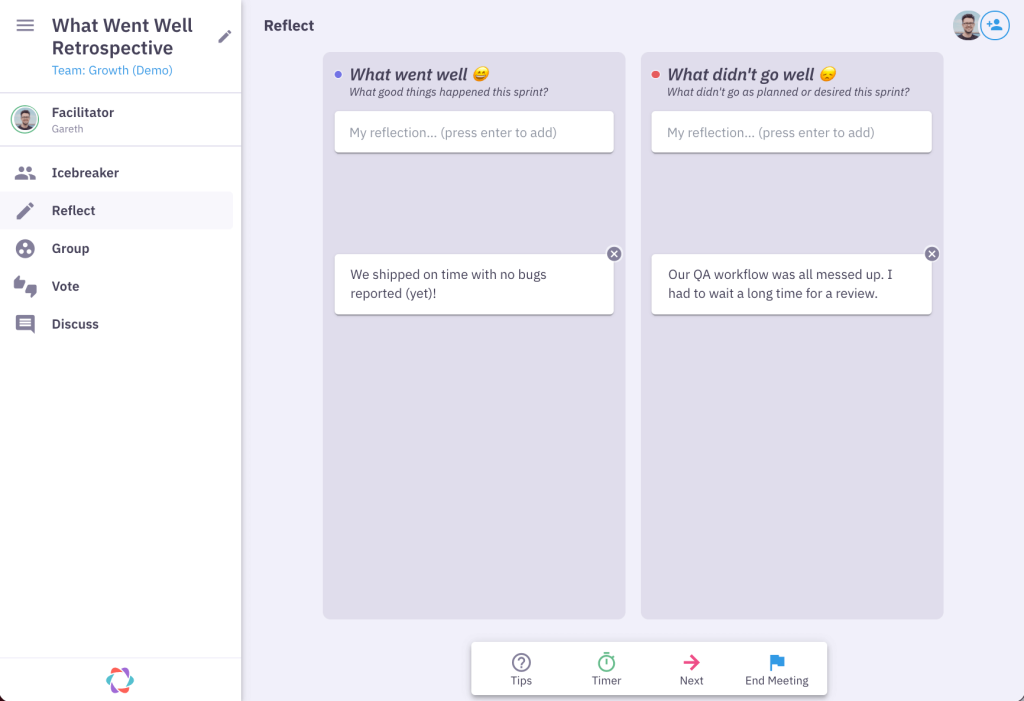
Online retrospective tools, like Parabol, can also help introverted staff members and distributed teams participate more equally in retrospectives. Parabol also allows you to run asynchronous retrospectives.
6. Hold retrospectives regularly (and don’t skip them!)
The goal of retrospectives is continuous improvement. Unless retrospectives are held regularly, your learnings and improvements will stall.
Agile coach Stefan Wolpers writes that “even the simplest form of a Retrospective… is far more helpful than having a fancy one once in a while, not to mention having none.”
The surest way to ruin the effectiveness of your retros is not having them at all or holding them infrequently. That’s why it’s important to build a retro habit and hold one retrospective per sprint. More experience means a better understanding of what works for your company culture and team personalities.

The more familiar teams are with retrospectives and their potential for improvement, the more routinely retros yield results. Meeting facilitators will also improve with more practice.
7. Turn complaints into accountabilities
Don’t let your retrospective turn into a complaint-fest. On the other hand, don’t be overly positive in your evaluations either. Find the right balance between positive and negative.
Pay attention to people blaming each other or complaining about things that went wrong without taking responsibility for their own faults. Set the tone on this. Take responsibility for mistakes you may have made during the last Sprint.
When people share complaints without solutions, encourage them to dive deeper into how they could have resolved the situation. Ask, “what could you have done differently?”
8. Read the retrospective prime directive aloud
Try reading the retrospective prime directive aloud at the very start of your retrospective. This helps set the tone and purpose of the retrospective. It can help prevent complaints, judgment, and blame games that can damage psychological safety.
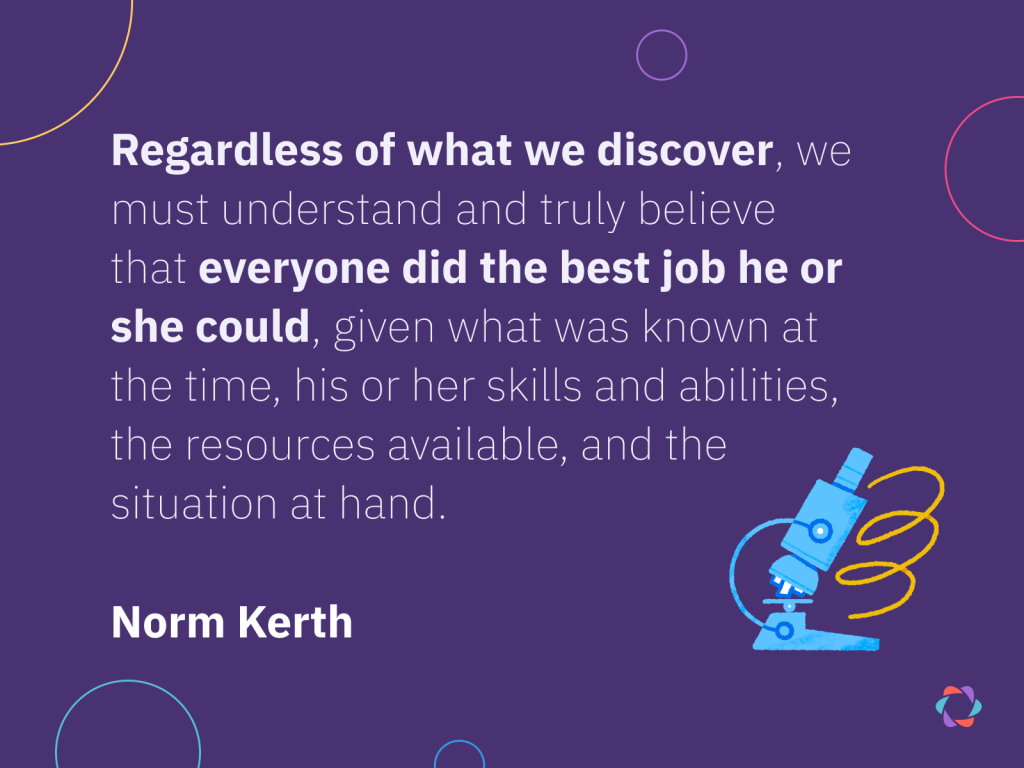
The prime directive encourages teams to take joint responsibility for identifying and following through on process improvements. Reading this short text at the start of every retro is also an easy thing to add to your retrospective workflow.
9. Match your retrospective meeting agenda with your goals
Don’t select a retrospective format or meeting type at random. Finding the ideal prompts for your next retro helps you stay on track, touch on the topics you want to cover, and ensures you outline problems and solutions.
Different prompts or templates to help your team have different types of conversations. Consider the pros and cons of different retro formats to select the one that will help you achieve your meeting’s goals.
10. Use an online retrospective board
An interactive online retrospective board can focus a team’s attention on the retrospective and away from distractions like Slack or e-mail.
The board gives everyone a chance to interact by adding sticky notes. You can even try agreeing on a new facilitator for each of your retros so your team members are even more active.
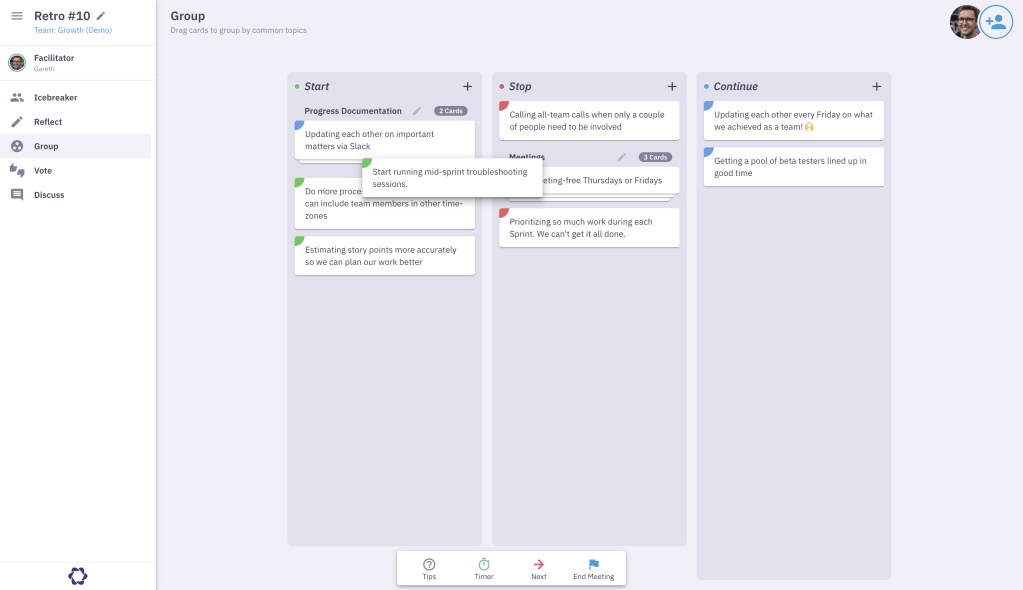
For remote teams, Parabol’s online retrospective tool is ideal. You can choose from dozens of retro formats and add icebreakers. We’ve included features that allow you to organize and vote on topics to pull everyone in while also structuring the flow of the meeting.
11. Follow up and follow through
Make sure you end your meeting with a well-defined to-do list that the entire team helped to create. Documentation makes things stick. You should never leave your retrospective without follow-up actions and goals.
Individual team members should end the meeting with their own action items. Wrapping up a retro without concrete steps or individual accountability for action items causes critical tasks to fall through the cracks and diminishes your retrospective’s effectiveness.
Here are a few tips for improving follow-up and following through on what you uncover during your retrospective:
- ⏳ Reserve time to organize notes. Let everyone define and share their actions to align on the next steps and responsibilities for those tasks.
- 🤏 Keep action items small. When tasks from your retros never get done, review if they’re too ambitious. It’s one thing to get excited about a grandiose action plan during a retro but quite another to find time to execute it during the next Sprint. Instead, try small improvements that add up to significant changes over time.
- 📝 Store notes and outcomes centrally. Use a shared, searchable note-taking tool or cloud folder where everyone can access and – voluntarily – store notes and photos, organized by retrospective and perhaps tagged with topics.
- 🤖 Use a tool that tracks action items for you. Parabol takes retrospective notes for you and can push your action items to Jira or GitHub, where your regular tasks may live. You can also download your retrospective history to track trends.
12. Keep managers out of retros
Managers and other people outside of your immediate team-mates shouldn’t attend Sprint Retrospectives.
All attendees must feel free to speak their minds about issues and obstacles holding back the Scrum team’s progress. That requirement includes being able to talk about bosses, executives, and other departments. When managers attend retrospectives, it becomes more difficult to have an open and honest conversation.
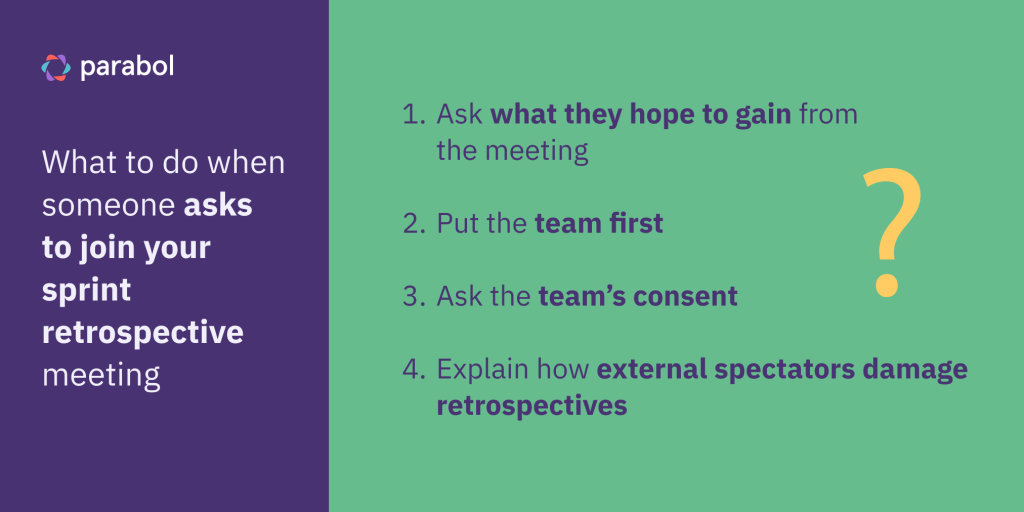
This recommendation doesn’t mean you should ignore ideas and feedback from anyone outside the development team or that you can’t have retros with others. Instead of inviting outsiders to your regular retrospectives, you can organize “Meta-Retrospectives” open to all stakeholders at the end of a quarter or large delivery.
13. What happens in retros stays in retros
Retrospectives should be psychologically safe spaces. Retros are confidential events where people can speak their minds freely without worrying about repercussions.
This rule has two aspects:
- What’s shared during a retro isn’t held against you later. Say I’m honest that I procrastinated during the last Sprint. That shouldn’t come up as a point in a performance review.
- What’s shared during a retro isn’t shared with anyone not present at the time. Unless the entire team agrees that certain information or actions require involvement from folks outside their team, the default for a retrospective’s content is confidentiality.
Conclusion: Don’t forget to retro your retro
The beauty of agile done well is that you can continuously improve anything – including your retrospectives!
When results from the events are diminishing, why not hold a retrospective dedicated to analyzing your past retrospectives and finding ideas on how to improve the next ones?
End every retro with an opportunity for team members to share how you can improve your future retrospectives and you’re on a fast-track of continuous improvement.
Need more retrospective inspiration?
Here are more articles and resources to help you up your retrospective game:
































